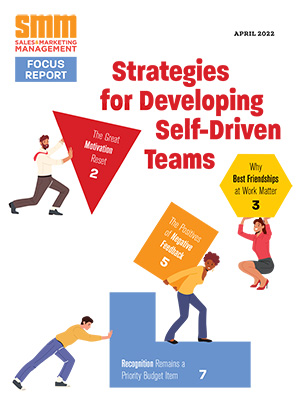
Increasing sales productivity and driving predictable revenue is the Holy Grail for sales managers. Striving to achieve the reality has fueled the careers of sales leaders for decades, and it’s created a technology market of sales apps that has attracted more than 9.7 billion in venture capital.
Despite the plethora of platforms, apps and seminars focused on improving sales productivity, the key to achieving the utopian state of sales already exists in nearly every sales organization on the planet, albeit often undervalued and unused.
Every time a prospect or customer visits a company’s website, downloads content or reviews a quote or contract, she or he is offering insights about the deal, its stage in the sales cycle and ultimately its likelihood to close. Similar to the well-honed approach veteran sales pros apply to understand body language in on-site meetings and golf outings, today’s sales experts can use these online interactions, or “digital body language,” to develop a keen understanding of the buyer journey and the prospect’s level of engagement.
Empowered with information like what a prospect has viewed in a quote, how long it’s been viewed and who it’s been forwarded to creates a newfound ability to apply the science of analytics to sales based on buyer interactions — an approach that can improve forecasting and drive new levels of sales productivity.
Here are three ways to uncover this hidden analytics opportunity in sales:
Make it easy to understand buyers
Buyers provide valuable insight with every asset they view: interactions with quotes, proposals and contracts can all point sales toward understanding what’s important to a prospect and the next step to take in the buyer’s journey. Delivering sales materials online makes it easy for sales teams to gain these insights and easy for buyers to review and sign quotes and contracts from any device, anywhere. When salespeople can easily understand how a buyer is interacting, they’ll be better positioned to provide a buying experience that closes deals.
Use insights to inform activity
Buyer insights paint a clearer picture of the buyer, their interests and others who are involved in evaluating and selecting a vendor. Patterns will emerge that point to the industries, regions and roles the “best” customers hold in their organizations. Sales pros can use that information to create an ideal customer profile (ICP) and work closely with marketing to focus pursuits toward similar deals. Equipped with this vital information, salespeople can spend more time on the most valuable prospects who are most engaged, and focus on deals that are more likely to close.
Prioritize sales/marketing alignment
The insights gained through online interactions with a prospect mean little if sales and marketing teams don’t work together to learn from both the successes and failures of activities that guide buyers to a final contract. Encouraging sales and marketing to set common metrics and develop a mutually agreed upon timeline is critical. Insights that identify buyer behavior provide a clear picture of engagement, showing companies how to create a seamless and effective buying experience. When sales and marketing prioritize the customer, the teams can deliver greater results and higher levels
of customer satisfaction.
Nearly every company in the world relies upon assets to sell. Whether it’s a quote, a proposal, a presentation or a contract, the opportunity to transform sales tools like these into a better way to understand buyer behavior is real. By delivering sales materials online, companies can deliver a better buying experience and unlock the analytics opportunity that may be hiding in plain sight.
Mitch Frazier is VP of Marketing at sales productivity pioneer TinderBox. Mitch oversees demand generation, thought leadership, branding, digital, public relations, events and community engagement.


